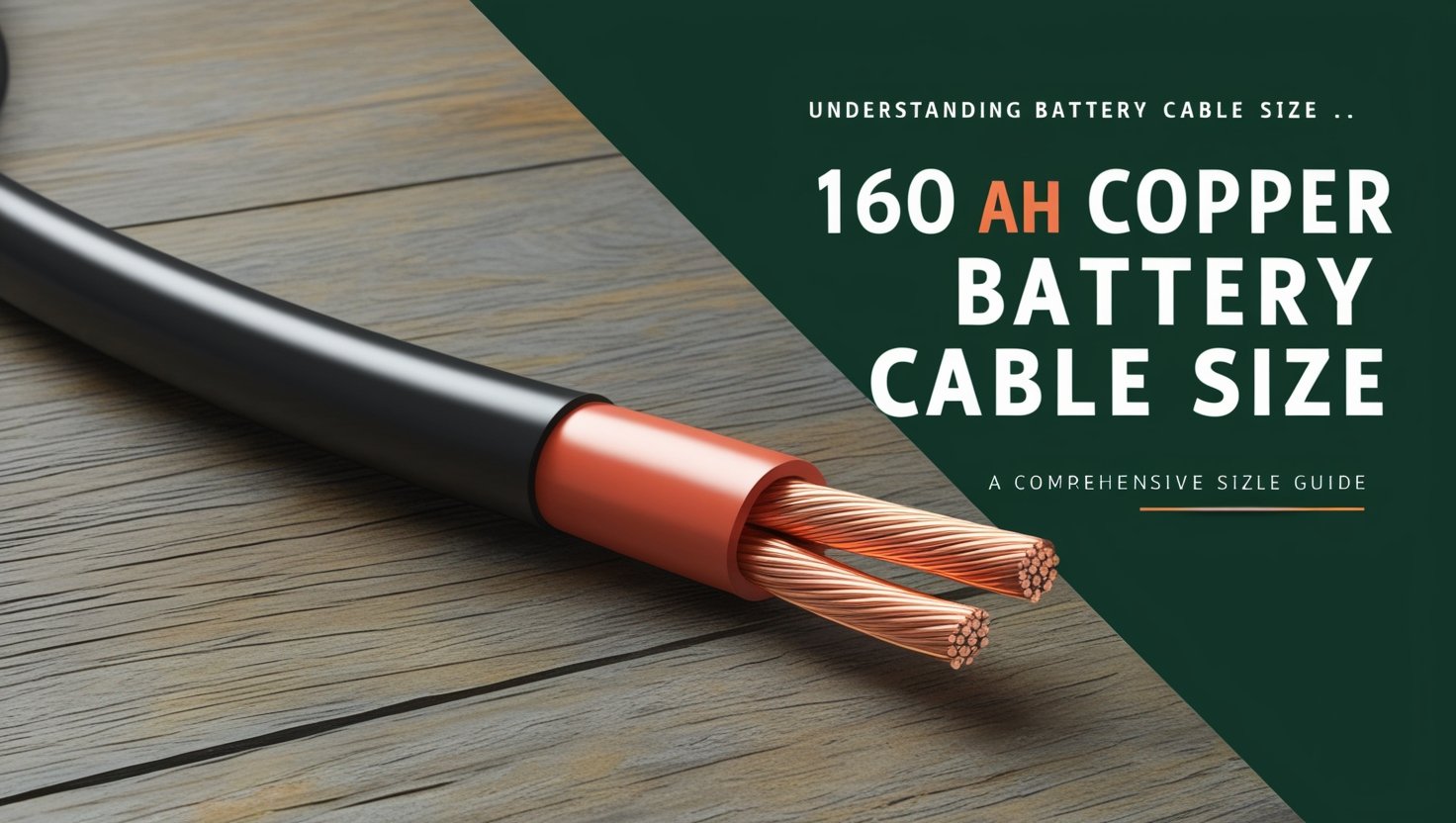Choosing the right battery cables for electrical systems cannot be overstated. One of the most critical specifications to consider is the size of the cable, mainly when dealing with high-amperage applications. In this article, we will explore the 160 AH copper battery cable size in detail, examining its significance, applications, and how to choose the suitable cable for your needs.
What is 160 AH Copper Battery Cable Size?
“160 AH” refers to the battery’s amperage rating, which is essential for determining the appropriate cable size. Copper battery cables are favored for their excellent conductivity and durability. The size of the cable affects how much current it can safely carry without overheating. Understanding the 160 AH copper battery cable size helps ensure your electrical system operates efficiently and safely.
Why Choose Copper Battery Cables?
Copper is the preferred material for battery cables for several reasons:
- High Conductivity: Copper has a lower electrical resistance than many other materials, allowing for efficient current flow.
- Durability: Copper is corrosion-resistant, ensuring a long lifespan even in harsh environments.
- Flexibility: Copper cables are more flexible than their aluminum counterparts, making installation easier.
Calculating the Right Cable Size
When determining the correct size for a 160 AH copper battery cable, several factors must be considered:
- Current Rating: The cable must handle the maximum current without overheating. For a 160 AH system, you’ll need to calculate the ampacity based on the length of the cable run and the expected load.
- Cable Length: Longer cables can lead to voltage drops, affecting performance. When choosing the cable size, it’s crucial to account for the distance between the battery and the load.
- Ambient Temperature: Higher temperatures can affect the cable’s ability to carry current. If your installation will be exposed to high temperatures, you may need a thicker cable to compensate.
Recommended Cable Size for 160 AH Systems
The National Electrical Code (NEC) guidelines the appropriate wire gauge for a typical 160 AH copper battery cable. A standard recommendation for 160 AH systems is a 2 AWG (American Wire Gauge) copper cable. This size strikes a balance between flexibility and current-carrying capacity.
Applications of 160 AH Copper Battery Cables
Understanding the applications of 160 AH copper battery cable size can help you make informed decisions. Here are some common uses:
Automotive Applications
A 160 AH battery setup may be used in vehicles for high-performance engines, audio systems, or off-grid applications. The correct cable size ensures power is delivered efficiently without overheating or voltage drop.
Marine Applications
Marine batteries often require robust cabling due to the harsh environmental conditions. A 160 AH copper battery cable is ideal for boats, ensuring reliability and safety while navigating.
Renewable Energy Systems
160 AH batteries may store energy in solar or wind energy systems. Properly sized cables ensure that the stored energy can be accessed efficiently.
Factors Influencing Cable Size Selection
When selecting a 160 AH copper battery cable size, consider the following factors:
Load Type
The type of load connected to the battery will influence the cable choice. A larger cable may be necessary for high inrush current loads.
Installation Environment
Cables installed in areas with high temperatures or potential physical damage may require thicker insulation or larger sizes.
Future Expansion
If you plan to expand your system in the future, it may be wise to opt for a slightly larger cable now to accommodate potential increases in load.
Installation Tips for 160 AH Copper Battery Cable Size
Proper installation is crucial for the longevity and safety of your battery system. Here are some tips for installing 160 AH copper battery cables:
Use Quality Connectors
Always use high-quality connectors that match the cable size. Heat accumulation and increased resistance might result from bad connections.
Keep Cables Short
Minimize the cable run length whenever possible to reduce voltage drop and improve efficiency.
Protect Against Damage
Protective sheathing or conduit safeguards cables from abrasion or exposure to chemicals.
Ensure Proper Grounding
A good ground connection is vital for safety, and you must ensure your grounding is adequate to prevent electrical shock or fire hazards.
Maintenance of 160 AH Copper Battery Cables
Regular maintenance of your battery cables can prolong their life and ensure safe operation. Here are some maintenance tips:
Inspect for Corrosion
Check cable connections regularly for signs of corrosion—clean connections with a wire brush or corrosion remover to maintain conductivity.
Check for Wear
Inspect cables for fraying or damage. Replace any damaged cables immediately to prevent failure.
Tighten Connections
Ensure all connections are tight to avoid resistance buildup, which can lead to overheating.
Conclusion
Understanding the 160 AH copper battery cable size is crucial for anyone involved in electrical systems. Whether you’re working on automotive, marine, or renewable energy applications, choosing the correct cable size ensures safety and efficiency. By considering factors like current rating, cable length, and installation environment, you can make informed decisions that will benefit your electrical systems for years.
Incorporating a 160 AH copper battery cable into your projects will improve performance and reliability. Remember to follow installation and maintenance guidelines to maximize the lifespan and effectiveness of your cablesBy prioritizing the correct specifications and proper care, youou can ensure your systems operate safely and effectivere.



